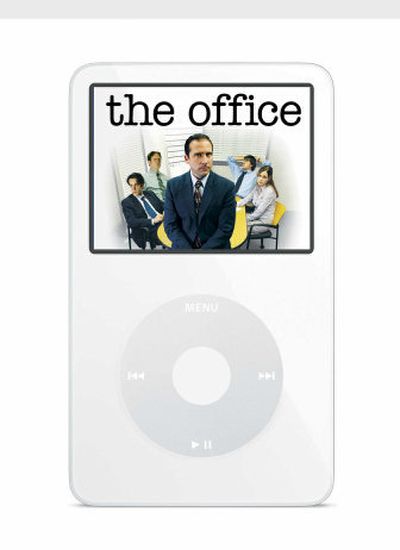Television turns to Web

Last week, in an effort to shake off the summer-TV doldrums, NBC debuted new episodes of “The Office,” its Emmy-nominated comedy series.
But there’s a catch: To watch them, you have to use a computer.
They’re not actually episodes per se, but “webisodes,” running about three minutes apiece on www.nbc.com. The 10 shorts will tell a serialized story about the sad-sack Dunder Mifflin accounting department’s attempts to figure out what happened to a missing $3,000.
It’s the latest in a series of TV network experiments in using nontraditional methods – such as broadband, iTunes, cell phones and even viral-video site YouTube.com – to draw attention to their over-the-air product.
“The (webisodes are) at the heart of our strategy,” says Beth Comstock, president of digital media and marketing development for NBC Universal.
“Video has literally been liberated (from standard TV sets),” Comstock says. “You can experience video content now in multiple platforms, in multiple ways … throughout your life.”
Although the idea of online webisodes sounds innovative, NBC – and other broadcast networks – are actually playing a game of catch-up, realizing the different ways the Internet can work to promote their shows.
A year ago, nobody was talking about TV-oriented digital media very much. The networks had Web sites, but they used them mostly for star bios and still pictures.
Now, many have broadband sites with Web-only content, as well as other ways of getting people to see their shows. It’s almost like networks are doing the TiVo-ing for you – but the new technology is moving so quickly that it’s a challenge to keep up.
Last year, cable channels MTV and VH1 introduced MTV Overdrive and VSpot, respectively, broadband sites that work in tandem with the cable networks’ shows – and, in what has become a novel twist for both music channels, made it easy to actually see music videos (that is, when the sites don’t have the hang-ups and buffering that’s so common with online viewing and listening).
In May, sister network CBS started Innertube, a broadband portion of its Web site with online-only series such as “Animate This” (cartoons that illustrate anecdotes told by CBS stars) and “Greek to Chic” (a makeover show that attempts to transform slovenly frat boys into sophisticated ladies’ men).
These sites, however, haven’t had as much of an impact as the video iPod.
When Apple Computer introduced the gadget in October, it also announced that it had made a deal with ABC that would allow the iTunes music store to sell episodes of “Lost” and “Desperate Housewives” for $1.99 a piece.
Other networks quickly followed suit: NBC made available episodes of “The Office” as well as some classic TV programs, and CBS has used iTunes to push “Survivor” and “CSI.”
One of the questions skeptics raised about the video iPod was whether people would watch TV on a screen that’s about 2 inches square. But Larry Kramer, CBS’ president of digital media, says minuscule screens such as iPods aren’t replacing TVs, they’re just providing more opportunities to watch.
“We learned a lot from March Madness,” Kramer says, referring to the NCAA basketball tournament that airs on CBS. “We learned that if anybody could watch a show in front of a 50-inch screen, they were gonna. But if they couldn’t, they would accept a lot (of tiny-screened options) in order to be able to see the action.”
It’s too early to tell how well the Internet initiatives are working. Nielsen Media Research, which provides ratings data for TV shows, recently announced plans to develop measuring systems for iPods, cell phones and other “outside-the-home” viewing devices.
But getting hard numbers isn’t easy, and Kramer says things are moving too quickly for those numbers to mean much.
“I can conclude today how many people will watch shows on iTunes, or all the existing video-on-demand places that we make our content available on,” he says. “And that will be valuable for today.
“But six months from now, there may be three versions of iTunes. There may be a whole new device that you fold up and put in your pocket, and it turns out to be an 8- by 10-inch screen that will cause more people to watch something portably because it’s easier and better.”
And ease of viewing is what the Internet initiatives are all about.
“The concept is to make it easy for (viewers to watch), wherever they have to be, or whatever time they happen to have,” Kramer says.
“If somebody’s watching ‘Survivor,’ and they miss the second and third episodes because they’re traveling, they might not go back and watch the show because it’s a serial and they might feel that they’ve missed too much,” he says. “But if they can catch up when they get home, or while they’re on the road with their iPod, they’ll be more engaged with the show when they come home again. …
“Everything we see so far supports the belief that the Web can support and help grow the business, not cannibalize it.”